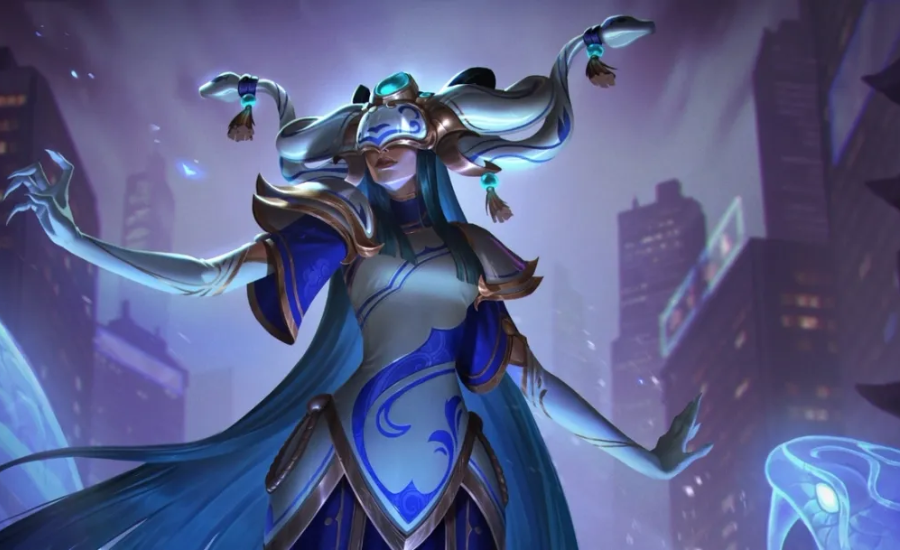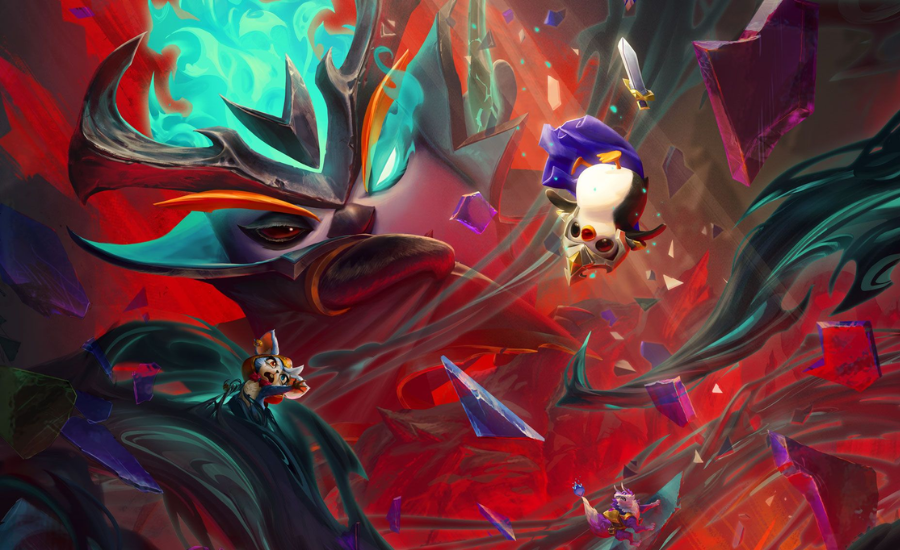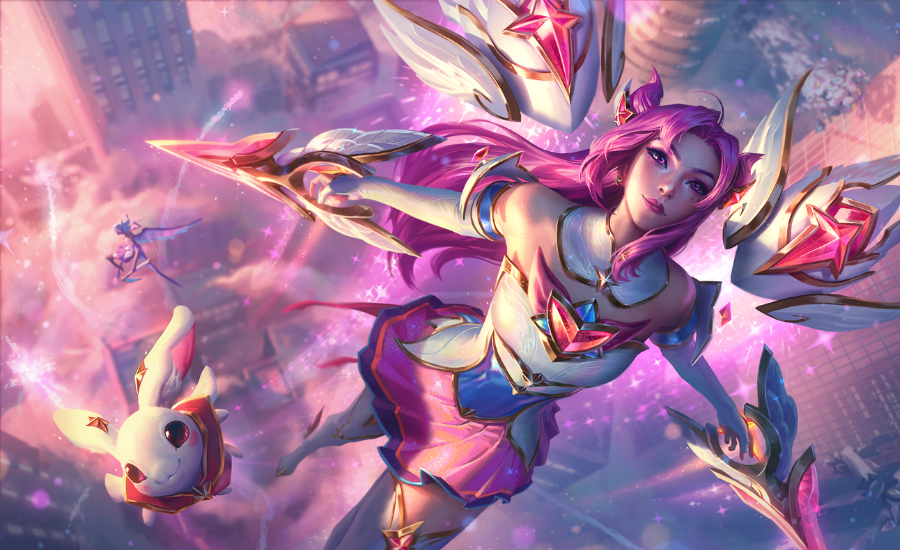Kindred Red or Blue Buff in TFT: An In-Depth Strategic Guide
In the intricate world of “Teamfight Tactics” (TFT), every decision you make can be the difference between victory and defeat. Among these crucial choices is deciding between Red Buff or Blue Buff for your champions, particularly for Kindred, a versatile and impactful unit. The decision between equipping Kindred Red or Blue Buff In TFT can significantly alter the dynamics of your game. In this comprehensive guide, we’ll delve into the pros and cons of each option, offering strategic insights to help you dominate the battlefield.
Understanding Kindred red or blue tft Role and Abilities in TFT
Before diving into the specifics of the Red and Blue Buffs, it’s essential to understand the role that Kindred plays within TFT. This duality makes them a flexible and often indispensable part of many team compositions.
Kindred red or blue tft Unique Abilities
- Mounting Dread: Kindred’s passive ability allows them to mark enemies, causing their attacks to deal additional damage. This ability is particularly effective when dealing with high-health targets.
- Dance of Arrows: This ability enables Kindred to fire multiple arrows at nearby enemies, dealing physical damage. It also allows them to reposition, enhancing their mobility in fights.
- Wolf’s Frenzy: This ability places a zone on the battlefield where Wolf attacks the closest enemy, applying on-hit effects and dealing magic damage over time.
- Lamb’s Respite: Kindred’s ultimate is a game-changing ability that creates a zone on the battlefield where no units can die for a few seconds, allowing for strategic plays in clutch moments.

The Role of Kindred red or blue tft in the TFT Meta
The TFT meta is constantly evolving, but Kindred has consistently remained a powerful choice due to their adaptability. Whether acting as a primary carry or as a supportive unit, Kindred’s presence in a team can dictate the flow of combat, making them a valuable pick in many situations.
Kindred red or blue tft Versatility
One of the primary reasons Kindred red or blue tft is a favored pick in TFT is their ability to fit into various team compositions. Their combination of offensive and defensive capabilities allows them to adapt to different strategies, whether you’re focusing on a hyper-carry composition or a balanced team setup.
- Damage Dealer: Kindred red or blue tft can serve as a primary damage dealer, especially when equipped with items that enhance their attack speed and critical strike potential.
The Red Buff vs. Blue Buff Decision
When it comes to optimizing Kindred red or blue tft performance in TFT, one of the most significant choices you’ll face is whether to equip them with Red Buff or Blue Buff. Each of these items brings a distinct set of advantages and disadvantages that can influence the outcome of your match.
Red Buff: Pros and Cons
When applied to Kindred,red or blue tft Red Buff can enhance their offensive capabilities in several ways.
Advantages of Red Buff
- Damage Over Time: Red Buff adds a burn effect to Kindred red or blue tft s basic attacks, dealing a percentage of the target’s maximum health as true damage over time. This is particularly effective against tanky opponents with high health pools.
- Healing Reduction: One of the most significant benefits of Red Buff is its healing reduction effect. This debuff reduces the effectiveness of healing and regeneration on the target, making it a powerful tool against compositions that rely heavily on sustain.
- Enhanced Auto-Attacks: The burn effect from Red Buff synergizes well with Kindred red or blue tft high attack speed, allowing them to chip away at enemy health more effectively, especially when combined with other attack-enhancing items.

Disadvantages of Red Buff
- Lack of Additional Utility: While Red Buff significantly enhances Kindred red or blue tft damage output, it doesn’t provide any additional utility, such as crowd control or mana regeneration. This can be a limitation in situations where your team needs more than just raw damage.
- Redundancy in Certain Compositions: In some scenarios, the benefits of Red Buff may overlap with Kindred red or blue tft existing abilities, such as their natural ability to slow enemies and deal damage over time. In these cases, Red Buff’s effects might be less impactful.
Blue Buff: Pros and Cons
On the other side of the spectrum, Blue Buff is an item that focuses on enhancing a champion’s ability to cast spells more frequently. This can be especially valuable for champions like Kindred,red or blue tft who benefit from consistent use of their abilities.

Advantages of Blue Buff
- Cooldown Reduction: Blue Buff provides a significant reduction in ability cooldowns. For Kindred,red or blue tft this means more frequent use of Dance of Arrows and Lamb’s Respite, allowing them to maintain high mobility and consistent protection for the team.
- Mana Regeneration: Blue Buff also offers enhanced mana regeneration, ensuring that Kindred red or blue tft can continuously cast their abilities without running out of resources. This is crucial in prolonged fights where sustained ability usage can turn the tide of battle.
- Increased Mobility: With reduced cooldowns and better mana management, Kindred red or blue tft can reposition more effectively during fights, allowing them to dodge incoming damage, chase down fleeing enemies, or protect key allies.
Disadvantages of Blue Buff
- Reduced Direct Damage: While Blue Buff enhances Kindred’s utility and spellcasting potential, it doesn’t directly increase their damage output.
- Dependency on Abilities: Kindred red or blue tft with Blue Buff can become overly reliant on their abilities.
Strategic Considerations: When to Choose Red Buff vs. Blue Buff
Choosing between Red Buff and Blue Buff for Kindred red or blue tft isn’t a straightforward decision.. Here’s how to evaluate these factors:
1. Team Composition and Synergy
Your team composition plays a crucial role in determining whether Red or Blue Buff will be more effective on Kindred red or blue tft .
- Red Buff for Damage-Centric Compositions: If your team composition is built around dealing consistent damage and wearing down enemies over time, Red Buff can be an excellent choice. It amplifies Kindred’s ability to shred through enemy health pools, especially when paired with other champions that can capitalize on the healing reduction effect.
- Blue Buff for Utility-Focused Compositions: If your team relies on strategic plays, such as zoning, crowd control, and protective abilities, Blue Buff is likely the better option. It enables Kindred to cast Lamb’s Respite more frequently, providing crucial protection during critical moments in team fights.
2. Analysing the Opponent’s Strategy
Understanding your opponent’s strategy is key to making an informed decision.
- Against Healing-Heavy Compositions: If the enemy team includes champions with strong healing or regeneration capabilities, such as Soraka or Vladimir, Red Buff’s healing reduction can be a game-changer. It limits the effectiveness of their sustain, giving your team an edge in prolonged engagements.
3. Playstyle and Personal Preference
Your personal playstyle is also an important factor in deciding between Red and Blue Buff.
- Aggressive Playstyle: If you prefer playing aggressively, focusing on maximizing damage output and quickly eliminating opponents, Red Buff aligns well with this approach. It enhances Kindred’s offensive capabilities, making them a formidable threat in skirmishes.
- Adaptive and Strategic Playstyle: If you favor a more adaptive playstyle, focusing on strategic positioning, utility, and adaptability, Blue Buff is likely more suitable. It allows Kindred to be more versatile in fights, providing consistent utility and protection for the team.
Situational Analysis: Adapting to the Game
The dynamic nature of TFT requires players to remain adaptable throughout the match. Depending on how the game progresses, you may need to adjust your strategy and reconsider which buff to equip on Kindred.

1. Responding to the Early Game
However, the early game can set the tone for the rest of the match, so it’s essential to make the most of what you have.
- Early Red Buff Advantage: If you secure an early Red Buff, it can help Kindred exert more pressure on the board, especially against tanky frontliners. The additional burn damage and healing reduction can give you an edge in skirmishes and help you maintain control of the board.
- Early Blue Buff Utility: Alternatively, an early Blue Buff can enable Kindred to use their abilities more frequently, helping you maintain tempo and adapt to your opponent’s moves. This can be particularly useful if you’re aiming to preserve your health and build a strong economy for the late game.
2. Mid-Game Adjustments
The mid-game is often where your strategy begins to take shape. This is also the stage where you’ll likely have access to more items and will need to start making decisions that align
Facts
- Kindred’s Versatility: Kindred is a highly versatile champion in TFT, capable of fulfilling roles as both a primary damage dealer and a utility provider. Their dual nature allows them to adapt to various team compositions.
- Red Buff Benefits: Equipping Kindred with Red Buff enhances their damage output through a burn effect and healing reduction, making it particularly effective against high-health and sustain-focused opponents.
- Blue Buff Benefits: Blue Buff reduces Kindred’s ability cooldowns and boosts mana regeneration, enabling more frequent use of their crucial abilities, particularly in strategic or burst-heavy situations.
- Team Composition Impact: The effectiveness of Red Buff or Blue Buff on Kindred heavily depends on the composition of both your team and your opponents. Red Buff suits damage-centric compositions, while Blue Buff is ideal for utility-focused strategies.
FAQs
Q1: When should I prioritize Red Buff for Kindred?
A: Prioritize Red Buff when facing tanky opponents with high health pools or when the enemy team relies heavily on healing and sustain. Red Buff’s burn and healing reduction effects will provide significant advantages in such scenarios.
Q2: What are the best situations to equip Kindred with Blue Buff?
A: Blue Buff is best equipped when your team composition benefits from frequent ability casts or when you’re facing teams with burst damage. The cooldown reduction and mana regeneration from Blue Buff will allow Kindred to use their abilities more strategically.
Q3: Can Kindred function without either Red Buff or Blue Buff?
A: Yes, Kindred can still be effective without these buffs, especially if they are equipped with other items that enhance their attack speed, critical strike, or survivability. However, Red or Blue Buff can significantly optimize their performance based on your strategy.
Q4: How does the TFT meta influence the choice between Red Buff and Blue Buff?
A: The TFT meta can shift the effectiveness of either buff. For instance, in a meta where sustain and healing compositions are dominant, Red Buff becomes more valuable. Conversely, in a burst-heavy meta, Blue Buff’s utility may be more crucial.
Q5: Is it possible to switch buffs on Kindred during the game?
A: In TFT, once you equip an item, it cannot be removed or swapped between champions during a match. Therefore, it’s important to make an informed decision early on based on the current game state and your strategy.
Conclusion
Choosing between Red Buff and Blue Buff for Kindred in Teamfight Tactics is a nuanced decision that can greatly influence the outcome of your matches. Red Buff is your go-to option when you need to amplify damage over time and reduce enemy healing, making it ideal for combatting tanky and sustain-heavy compositions. On the other hand, Blue Buff shines when Kindred’s ability to cast spells frequently can turn the tide of battle, offering strategic advantages in both offense and defense.
Ultimately, the choice hinges on your team composition, the enemy’s strategy, and your personal playstyle. By carefully weighing these factors, you can optimize Kindred’s performance and gain the upper hand on the battlefield. Whether you lean towards the raw damage of Red Buff or the utility of Blue Buff, understanding the strengths and limitations of each will help you lead your team to victory.
Read More: Aoomal Blog






